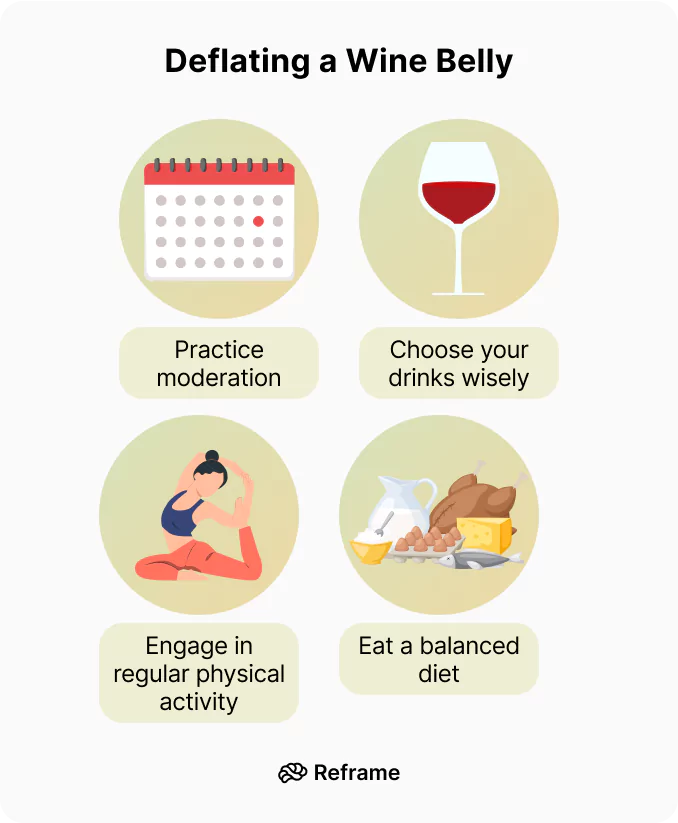What Are the Dangers of Too Much Belly Fat?
What are some of the health risks associated with having excess belly fat? Understanding this can be crucial to your well-being, as it can significantly impact your life in various ways.
Learn How the Exotic Rice Method Liquifies Fat Overnight!
Understanding Belly Fat
Belly fat, also known as visceral fat, is the fat that accumulates around your abdominal organs. Unlike subcutaneous fat, which lies just beneath your skin, visceral fat is much deeper and can lead to serious health issues. Recognizing the differences between these types of fats can help you manage your health better.
Types of Belly Fat
-
Subcutaneous Fat: This is the fat you can pinch on your stomach. While it can still pose some risks, it’s not as harmful as visceral fat.
-
Visceral Fat: This is the more dangerous type, lurking around your organs. It’s metabolically active, releasing chemicals that can disrupt your body’s normal functions.
It’s essential to be aware of which type of fat you’re carrying, as it can influence your approach to health and weight loss.
Why Is Belly Fat Dangerous?
The dangers associated with excess belly fat cannot be taken lightly. It’s not just a cosmetic concern; it’s a significant health risk.
Increased Risk of Chronic Diseases
-
Heart Disease: Excess visceral fat can lead to increased cholesterol levels and hypertension, significantly raising your risk of heart disease.
-
Type 2 Diabetes: Belly fat is a significant contributor to insulin resistance, which can lead to type 2 diabetes. Changes in your body’s responsiveness to insulin can profoundly affect your overall health.
-
Cancer: Some studies have linked excess belly fat to an increased risk of certain types of cancers, including breast and colorectal cancer.
Understanding these risks empowers you to make informed health choices.
How to Measure Belly Fat
Waist Circumference
One effective way to gauge your belly fat is by measuring your waist circumference. Place a measuring tape around your waist, just above your hip bones, and note down the measurement.
- For women: A waist circumference of more than 35 inches is considered high.
- For men: A waist circumference of more than 40 inches signals a potential health risk.
This measure gives you a quick idea of where you stand in terms of belly fat and overall health.
Body Mass Index (BMI)
While BMI isn’t a direct measure of belly fat, it can still provide useful insights about your weight categories. You can calculate your BMI using the following formula:
BMI = weight (kg) / (height (m))^2
Here’s a simplified breakdown of BMI classifications:
| BMI Range | Classification |
|---|---|
| Under 18.5 | Underweight |
| 18.5 – 24.9 | Normal weight |
| 25 – 29.9 | Overweight |
| 30 and above | Obesity |
Though BMI doesn’t consider distribution of fat, it’s a good starting point to evaluate your weight status.
Lifestyle Factors Contributing to Belly Fat
Poor Diet
The food choices you make significantly affect the accumulation of belly fat. Diets high in sugars and unhealthy fats can lead to weight gain, particularly in the abdominal region.
-
Sugary Foods: Regularly consuming foods high in refined sugars can contribute to fat storage around the belly.
-
Trans Fats: Often found in processed foods, trans fats not only lead to increased fat accumulation but can also worsen your heart health.
Making healthier food choices promotes not just weight loss but a feeling of overall well-being.
Lack of Physical Activity
Sedentary lifestyles can lead to weight gain, particularly in the belly area. Regular exercise is not only beneficial for burning calories but also vital for maintaining healthy body composition.
Incorporate both aerobic activities, like walking or running, and strength training for the best results. This combination can help reduce overall fat, including that stubborn belly fat.
Stress and Sleep
Stress and insufficient sleep both contribute to hormonal changes that can lead to weight gain. High stress levels can result in increased levels of cortisol, a hormone that is linked to increased appetite and cravings for unhealthy foods.
On the other hand, inadequate sleep can throw off your body’s hunger hormones, leading to increased hunger and cravings. Finding a balance through relaxation techniques and adequate rest can help manage this.

The Role of Genetics
Genetics can influence where your body tends to store fat. Some people are predisposed to store more fat in their abdominal area, making lifestyle changes even more critical. Understanding your family’s history can empower you to take proactive measures in managing belly fat effectively.
However, while genetics play a role, it doesn’t mean you’re helpless. Focus on what you can control, such as your diet and activity level.
Health Risks Associated with Abdominal Fat
Cardiovascular Risks
Excess belly fat significantly raises the likelihood of heart-related problems. As mentioned earlier, visceral fat can lead to critical factors like high blood pressure and cholesterol, increasing your risk of heart disease.
Staying proactive about your heart health can involve measures like regular check-ups, dietary changes, and increasing physical activity.
Metabolic Syndrome
Metabolic syndrome is a cluster of conditions that occur together, increasing your risk of heart disease, stroke, and diabetes. This syndrome includes:
- Increased blood pressure
- High blood sugar
- Excess fat around the waist
- Abnormal cholesterol levels
The presence of belly fat often signals that you may be at risk for developing metabolic syndrome, making it essential to monitor your health actively.
Respiratory Problems
Having excess belly fat can also negatively impact your respiratory function. It can inhibit the lung capacity and make breathing difficult, especially during physical activity.
If you’re experiencing breathlessness or difficulty in physical exertion, consider consulting a healthcare professional.

Psychological Effects of Excess Belly Fat
Low Self-Esteem and Body Image Issues
The societal standards of beauty can create pressure, leading to body image concerns. People with excess belly fat often find themselves struggling with self-esteem issues, which can impact mental health.
Fostering a positive self-image and practicing self-love can make a significant difference. Also, engaging in supportive communities can facilitate a healthier mindset.
Anxiety and Depression
Research has demonstrated a link between obesity and higher rates of anxiety and depression. The emotional toll of dealing with excess belly fat can lead to psychological stress, creating a cycle that may be difficult to break.
Seeking support through therapy or counselors can be invaluable for anyone grappling with these issues.
The Path to Reduction
Nutritional Adjustments
Making specific dietary changes can significantly aid in reducing belly fat. Here are some simple suggestions:
-
Increase Fiber Intake: Foods rich in soluble fiber, such as oats and fruits, help you feel full longer. They can also assist in reducing fat accumulation.
-
Stay Hydrated: Water is crucial and can assist in digestion while suppressing appetite, leading to reduced calorie intake.
-
Limit Sugar and Refined Carbs: Reducing your intake of sugar-laden products and replacing them with healthier snacks can help control cravings while promoting better health.
Exercise Regularly
Many studies suggest that combining aerobic exercise with strength training is the most effective way to lose belly fat.
-
Aerobic Activities: These include walking, jogging, cycling, and swimming.
-
Strength Training: Engaging in exercises that build muscle can help boost metabolism, contributing to fat loss.
Set Realistic Goals
Setting achievable goals is crucial in your journey toward reducing belly fat. Having realistic expectations can prevent frustration and help maintain motivation.
Start with small targets and gradually increase them as you hear results.
Monitoring Progress
Check Your Measurements Regularly
Keep track of your waist circumference and weight regularly. Seeing the progress you make can be a great motivator and a reminder of your efforts.
Refine Your Plan as Needed
If progress stalls or you experience setbacks, don’t be afraid to adjust your strategy. Consulting health professionals or nutritionists can provide valuable insights tailored to your needs.
Conclusion
Understanding the dangers of excess belly fat can empower you to take charge of your health. With a blend of dietary changes, regular exercise, and mental well-being focus, you can effectively manage your weight and mitigate the associated risks.
Taking these steps not only promotes a healthier lifestyle but can foster a sense of achievement and confidence in your journey. Embrace the process, remain patient, and celebrate your milestones—both big and small. You have the power to make a positive change!






